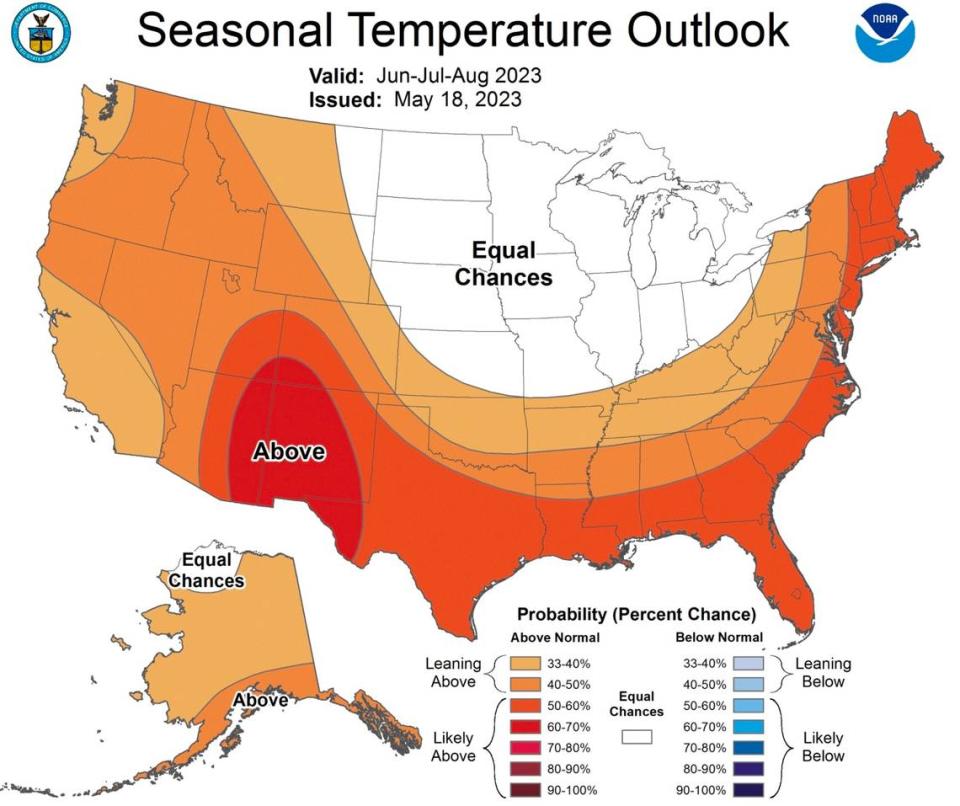Here’s how hot and rainy SC will be this summer, the latest NOAA report predicts
South Carolinians should expect an even hotter summer than usual this year, according to the National Oceanic and Atmospheric Administration.
Hotter-than-normal temperatures will be possible across most of the U.S. between June and August — with most of the worst heat expected for the South, East Coast and Southwest, NOAA’s latest summer outlook shows.
For South Carolina, most of the state is predicted to have a 50-60% chance of above average temperatures this summer. Meanwhile, the Upstate will have a slightly more modest 40-50% chance of above average temperatures, NOAA states.

NOAA also predicts the Palmetto State could have a little more rainfall than usual this summer. The outlook calls for a 33-40% of above average rainfall for the state.
Here is a graph that shows the average temperatures during the summer months, as well as the other months of the year, for Richland, Greenville, Charleston and Horry counties over the last three years, according to data from the National Centers for Environmental Information.
What about El Niño?
According to NOAA, there’s a strong chance of El Niño developing between May and July.
El Niño creates the possibility of a weaker hurricane season.
“Simply put, El Niño favors stronger hurricane activity in the central and eastern Pacific basins, and suppresses it in the Atlantic basin,” NOAA states.
The Atlantic hurricane season starts June 1 and lasts through November. Still, that in no way means South Carolina is safe from hurricanes this year, experts warn.
Colorado State University researchers’ early forecast for hurricane season 2023 predicts 13 named storms for the season this year.
Also, El Niño typically means wetter conditions across South Carolina and the Southeast in general during the winter. That could mean more stormy weather and potential flooding.
However, the extra rainfall from El Niño can vary drastically geographically in South Carolina, a study from the S.C. State Climatology Office at the S.C. Department of Natural Resources.
The 2015 study, which measured rainfall in the state over several decades, shows that, for instance, Charleston had an average 47% increase in rainfall during strong El Niño winters and a 15% average increase during moderate to weak El Niño winters. Meanwhile, Columbia had an average 27% jump in rain during strong El Niño winters and an 18% increase during moderate to weak El Niño winters.

